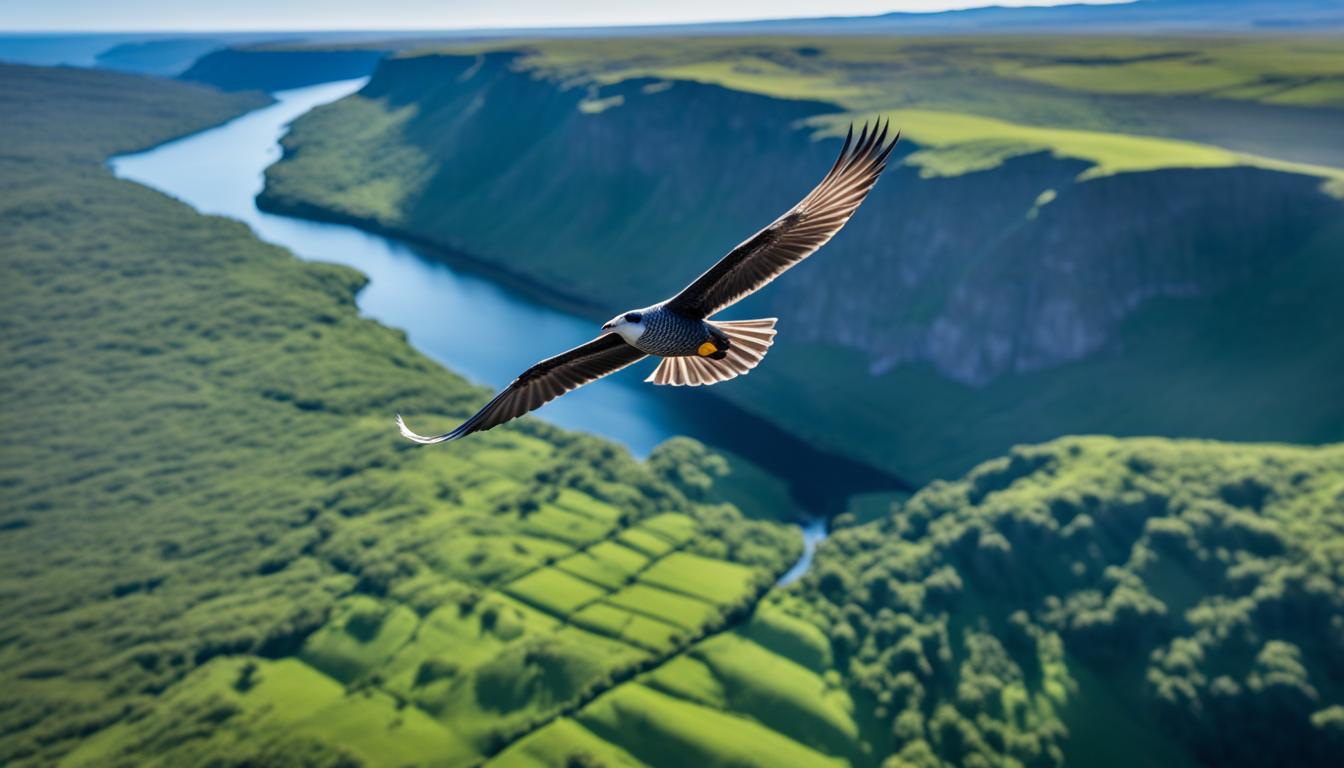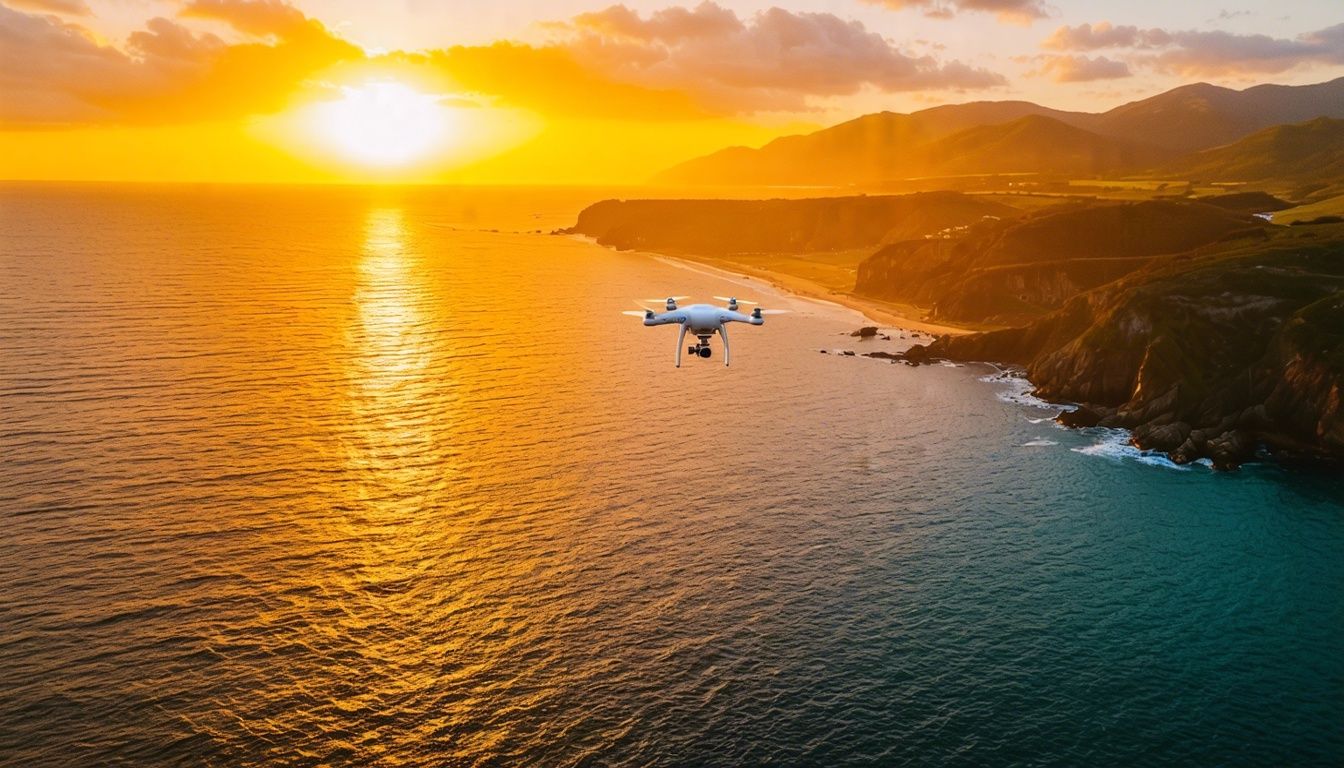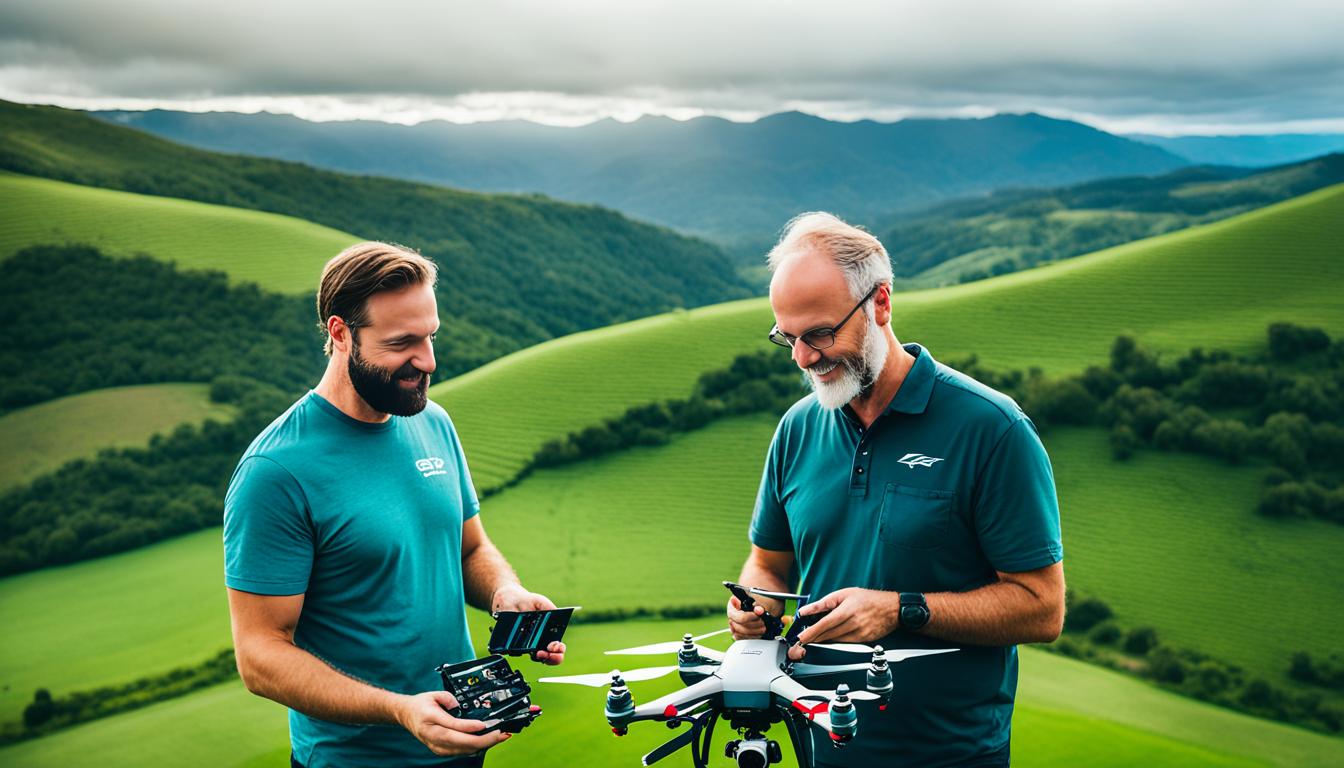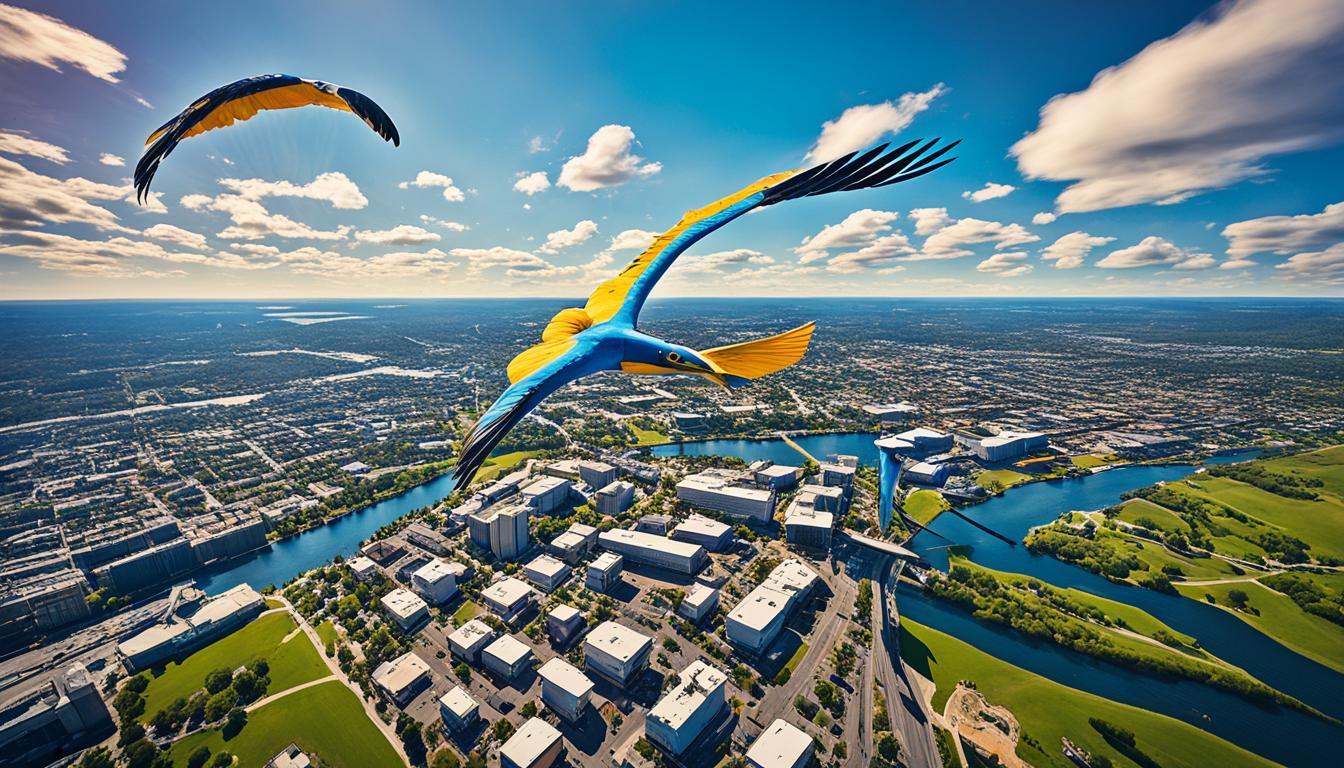Wildlife photography has always been an exhilarating and challenging pursuit, requiring patience, skill, and a keen eye for capturing those fleeting moments in nature. But with the advent of drones, capturing stunning aerial shots of wildlife has become even more accessible and breathtaking. In this article, we will delve into the world of wildlife photography with drones, exploring the art of aerial wildlife photography and uncovering invaluable drone photography tips for wildlife that will elevate your work to new heights.
Key Takeaways:
- Drone photography offers a unique perspective, allowing for breathtaking aerial shots of wildlife and their habitats.
- Using drones for wildlife photography provides increased accessibility to remote and inaccessible locations, resulting in unique nature drone shots.
- With the right drone and techniques, you can capture stunning images of wildlife in their natural habitats while minimizing disturbance.
- Researching and selecting the best drones for wildlife photography is crucial for achieving professional quality results.
- Mastering wildlife drone filming techniques will help you capture the essence of wildlife behavior and create impactful visual narratives.
What Are Wildlife Drones and How Do They Work?
Wildlife drones, also known as unmanned aerial vehicles (UAVs), are cutting-edge devices specifically designed to monitor, track, survey, and protect wildlife and their habitats. These advanced technological marvels leverage cameras, sensors, and artificial intelligence (AI) algorithms to gather crucial data while minimizing human disturbance.
Operating on the principles of aerial surveillance and data collection, wildlife drones utilize a variety of sophisticated tools and techniques to fulfill their vital role. Thermal cameras, for instance, enable these drones to detect heat signatures, making it possible to capture high-resolution imagery even in low light or dense foliage. Additionally, by employing remote sensing technology, wildlife drones can collect vital data on habitat conditions and environmental factors.
“Wildlife drones equipped with thermal cameras can detect heat signatures and capture high-resolution imagery even in low light or dense foliage.”
The incorporation of AI and machine learning further enhances the capabilities of wildlife drones. These drones can analyze the collected data in real-time, aiding in species identification, behavior analysis, and threat detection. By leveraging advanced technology and innovative techniques, wildlife drones play a pivotal role in supporting wildlife research, conservation, and management efforts.
| Type of Technology | Applications |
|---|---|
| Cameras | High-resolution imagery, data collection on animal behavior and population dynamics |
| Sensors | Gathering environmental data, monitoring habitat conditions |
| AI Algorithms | Real-time data analysis, species identification, threat detection |
The combination of advanced technology, such as cameras, sensors, AI algorithms, and machine learning, empowers wildlife drones to effectively collaborate with researchers and conservationists to protect and preserve our precious wildlife resources.
Types of Wildlife Drones and Their Specialized Features
When it comes to wildlife research and conservation, there is a wide range of drones available that cater to different needs. Let’s explore the various types of wildlife drones and their specialized features:
Fixed-Wing Drones

Fixed-wing drones resemble traditional airplanes and are ideal for covering large areas during aerial surveys and tracking migratory patterns. These drones offer extended flight times and can capture high-resolution imagery from great distances. With their efficient design and long flight endurance, fixed-wing drones are highly suitable for tasks that require broad coverage and long-range observations.
Multirotor Drones
Multirotor drones, including quadcopters and hexacopters, are versatile and agile. These drones excel at close-range monitoring and observation, making them invaluable in dense forests or urban environments. With their ability to hover and maneuver in tight spaces, multirotor drones provide researchers with a detailed view of wildlife behavior, even in challenging terrain. They are equipped with high-resolution cameras, allowing for precise data collection.
Hybrid Drones
Hybrid drones combine the best of both fixed-wing and multirotor designs. These drones offer the flexibility of vertical takeoff and landing, making them well-suited for extended-range surveys. Hybrid drones are capable of covering large areas efficiently and capturing high-resolution imagery. Their range and versatility make them handy tools for various wildlife research and conservation tasks.
Specialized Features
Each type of wildlife drone comes with specialized features tailored to specific research and conservation needs. Some of these features include:
- High-resolution cameras for detailed imagery
- Long flight times for extended monitoring and observation
- Autonomous features for efficient data collection
These specialized features enable researchers to perform aerial surveys, track migratory patterns, conduct close-range monitoring, study wildlife behavior, and monitor environmental conditions effectively.
By utilizing the right drone with the appropriate features for specific tasks, researchers and conservationists can gather valuable data and insights necessary for wildlife management and protection.
Benefits of Using Drones for Wildlife Conservation
The use of drones for wildlife conservation offers numerous benefits. Firstly, drones reduce disturbance to wildlife as they can capture essential data from safe distances without physically intruding on their habitats. This allows for unobtrusive monitoring of animals in their natural state.
Additionally, drones enable enhanced data collection by capturing high-resolution imagery and videos, providing detailed insights into animal behavior, population dynamics, and habitat conditions. With drones equipped with advanced cameras and sensors, researchers can gather accurate and comprehensive data that was previously difficult to obtain using traditional methods.
Moreover, using drones is cost-effective as they cover larger areas in less time compared to traditional methods, reducing the need for expensive helicopter operations and minimizing labor costs. This increased efficiency allows researchers and conservationists to maximize their resources and allocate funds to other critical areas of wildlife conservation.
Furthermore, drones improve the safety of researchers by providing remote access to challenging terrains, eliminating the need for researchers to venture into potentially dangerous environments. They can navigate inaccessible areas such as dense forests, cliffs, and wetlands, allowing researchers to collect vital data without putting themselves at risk.
In summary, the benefits of using drones for wildlife conservation include reduced disturbance to wildlife, enhanced data collection, cost-effectiveness, and improved safety for researchers. These advantages make drones an invaluable tool in the field of wildlife conservation, enabling researchers to gather crucial information and implement effective conservation strategies.
Comparison of Traditional Methods and Drone Technology for Wildlife Conservation
| Traditional Methods | Drones | |
|---|---|---|
| Disturbance to wildlife | Direct disturbance during data collection | Minimized disturbance as data can be collected from safe distances |
| Data collection | Limited data, lower resolution | High-resolution imagery, detailed behavioral insights |
| Cost-effectiveness | Expensive operations (e.g., helicopters) | Reduced costs due to efficient coverage and minimized labor |
| Safety for researchers | Exposure to potential risks and hazards | Remote access to challenging terrains, enhanced safety |
How are Drones Used in Wildlife Management?
When it comes to wildlife management, drones have emerged as invaluable tools for various purposes. From monitoring and conservation efforts to combatting wildlife crime and disaster response, these unmanned aerial vehicles have revolutionized the way we approach wildlife management.
Drones are extensively used in wildlife monitoring and conservation, providing researchers with valuable insights into animal behavior, migration patterns, and population dynamics. Equipped with advanced surveillance technology, drones can capture high-resolution imagery and data, allowing for a deeper understanding of wildlife habitats and ecosystems. This information is crucial for making informed conservation decisions and implementing effective management strategies.
Quote: “Drones have revolutionized wildlife monitoring and conservation, providing us with a bird’s eye view of animal habitats and behavior.”
– Dr. Emily Williams, Wildlife Conservation Biologist
Another significant role that drones play in wildlife management is combatting wildlife crime. With their ability to access remote areas and capture detailed imagery, drones assist in detecting and deterring poaching activities. These aerial surveillance tools provide rangers and law enforcement agencies with crucial information and evidence, making it easier to identify and apprehend wildlife criminals.
Quote: “Drones serve as an effective deterrent against poaching activities, helping us protect endangered species and preserve our natural heritage.”
– Officer Mark Thompson, Wildlife Crime Unit
Drones also facilitate efficient surveys and research by covering vast areas swiftly and collecting vital biological data. Traditional wildlife surveys often involve time-consuming and labor-intensive processes, but drones can significantly expedite these efforts. By flying over large territories and capturing high-resolution imagery, drones allow researchers to gather essential data for species population assessments, biodiversity studies, and habitat mapping.
During times of disasters or wildlife emergencies, drones equipped with thermal cameras prove invaluable in wildlife rescue operations. These cameras can quickly identify stranded animals and guide rescue teams to their exact locations. By providing real-time visual information, drones enhance the planning and execution of wildlife rescue efforts, ensuring a swift and effective response.
To summarize, drones have become vital instruments in wildlife management, from monitoring and conservation to combating wildlife crime and facilitating efficient surveys and research. Their versatility, accessibility, and advanced capabilities make them invaluable tools for wildlife biologists, conservationists, and law enforcement agencies worldwide.

| Application | Benefits |
|---|---|
| Wildlife Monitoring and Conservation | – Provides insights into animal behavior, migration patterns, and population dynamics – Enables effective conservation decision-making – Minimizes disturbance to wildlife |
| Combatting Wildlife Crime | – Detects and deters poaching activities – Provides evidence for law enforcement agencies – Protects endangered species |
| Efficient Surveys and Research | – Covers large areas swiftly and collects vital biological data – Accelerates population assessments and biodiversity studies – Facilitates habitat mapping |
| Disaster Response and Wildlife Rescue | – Identifies stranded animals in emergency situations – Guides rescue efforts with real-time visual information – Ensures swift and effective wildlife rescue operations |
Conclusion
Drones have revolutionized wildlife photography and conservation, providing photographers with unparalleled opportunities to capture stunning aerial shots and contribute to the protection of our natural world. However, using drones in wildlife photography comes with its own set of challenges.
One of the primary challenges is navigating flight restrictions and regulations. It is crucial for photographers to be aware of and comply with local laws and regulations regarding drone usage. Additionally, responsible flying is essential to minimize disturbance to wildlife and ensure their well-being. By practicing responsible flying techniques, such as maintaining a safe distance from animals and avoiding sensitive areas, photographers can capture precious wildlife images while respecting the animals’ natural habitats.
Flying a drone also requires a certain level of skill and photography experience. It is important for photographers to possess the necessary flying skills and knowledge to pilot the drone safely and effectively. This includes mastering flight controls, understanding the drone’s capabilities, and adapting to different environmental conditions.
Despite these challenges, drones have immense potential in wildlife photography. As technology continues to advance, drones will continue to provide new and exciting opportunities for photographers to explore and document the beauty of wildlife from a unique perspective. By overcoming the challenges and embracing responsible flying practices, photographers can harness the full potential of drones for wildlife photography and contribute to the conservation of our precious natural world.
FAQ
What are wildlife drones?
Wildlife drones are unmanned aerial vehicles designed specifically for monitoring, tracking, surveying, and protecting wildlife and their habitats.
How do wildlife drones work?
Wildlife drones gather crucial data while minimizing human disturbance, using advanced technology such as cameras, sensors, and AI algorithms. They utilize thermal cameras to detect heat signatures and capture high-resolution imagery, and remote sensing technology to gather data on habitat conditions and environmental factors.
What types of wildlife drones are there?
There are several types of wildlife drones, including fixed-wing drones, multirotor drones, and hybrid drones. Each type has its own specialized features that cater to specific wildlife research and conservation needs.
What are the benefits of using drones for wildlife conservation?
Using drones for wildlife conservation reduces disturbance to wildlife, enhances data collection, is cost-effective, and improves the safety of researchers by providing remote access to challenging terrains.
How are drones used in wildlife management?
Drones are used in wildlife management for tasks such as wildlife monitoring and conservation, combatting wildlife crime, efficient surveys and research, and disaster response and wildlife rescue.
What are the challenges of using drones in wildlife photography?
Some challenges of using drones in wildlife photography include flight restrictions, the need to prioritize wildlife protection, and the requirement for photographers to possess flying skills and photography experience.
How Can Drones Be Used for Wildlife Photography?
Drones are revolutionizing wildlife photography as sports and action photography drones provide unique aerial perspectives of animals in their natural habitats. These drones can capture stunning, high-quality images and videos without disturbing the animals, making it easier for photographers to document wildlife behavior and habitats from a safe distance.




